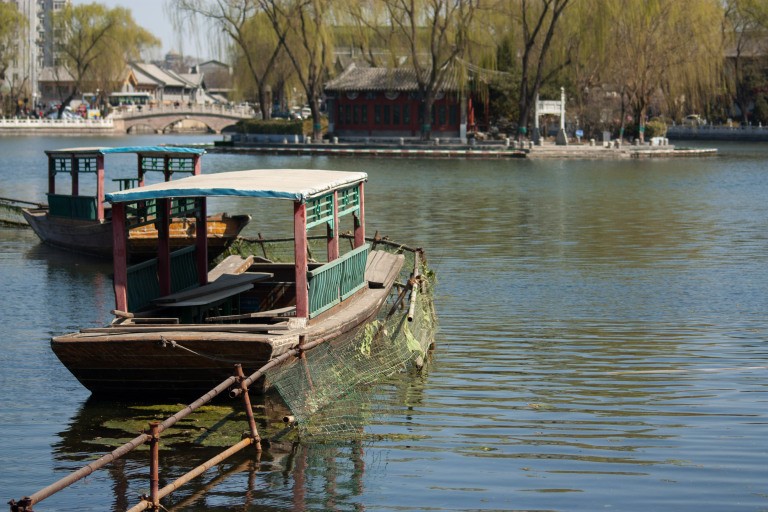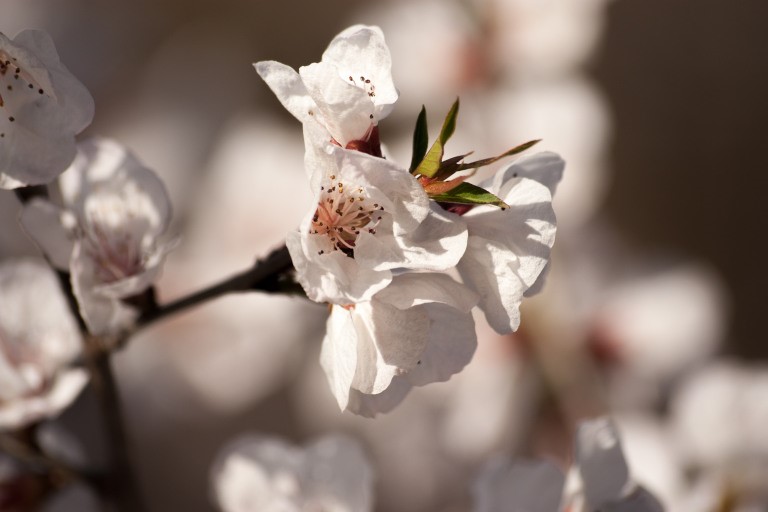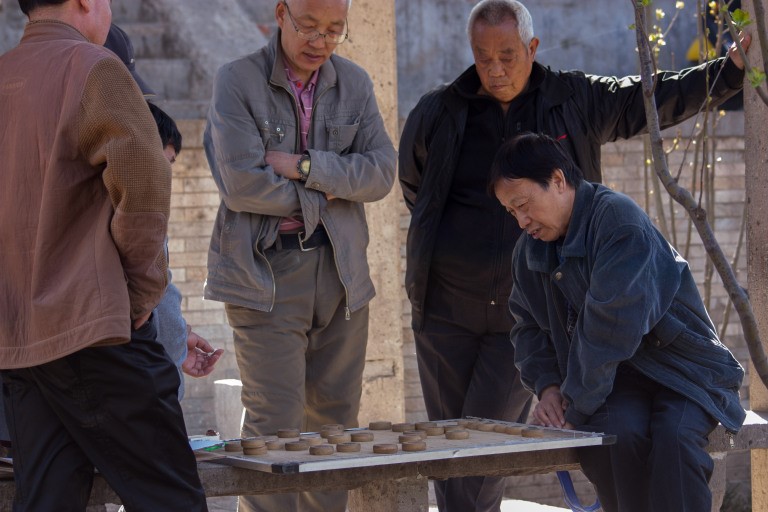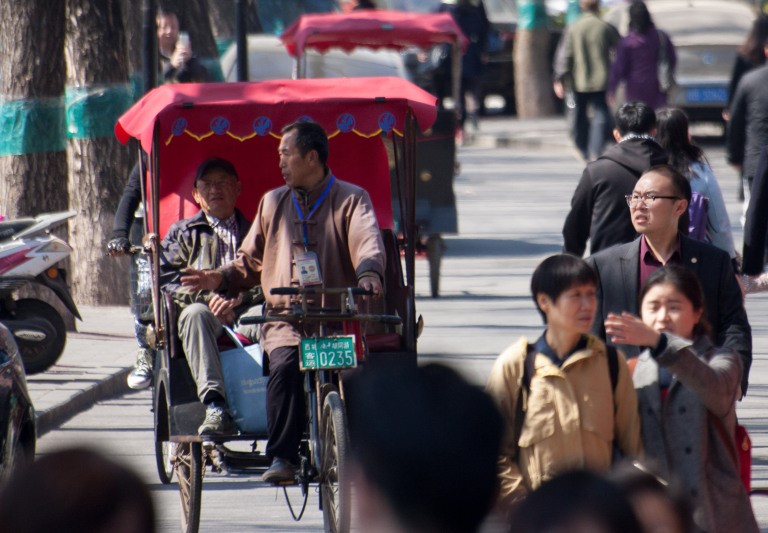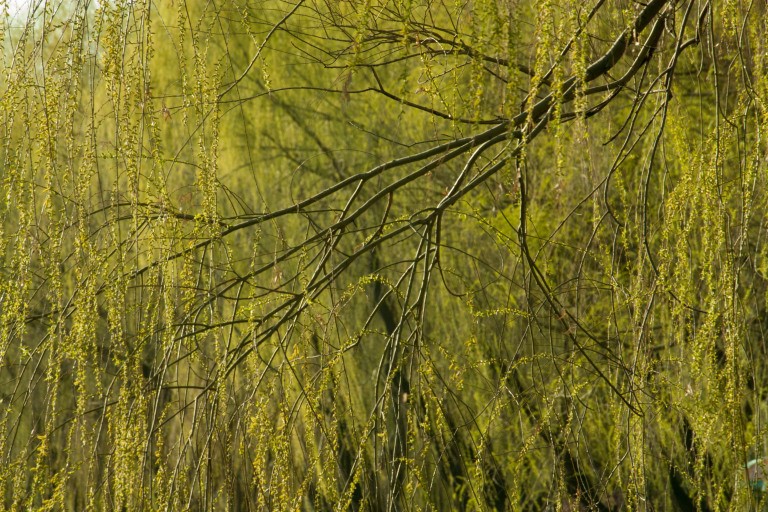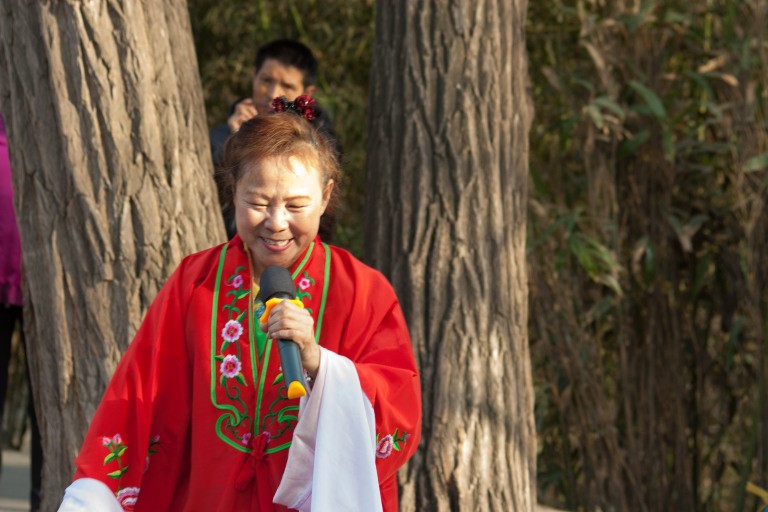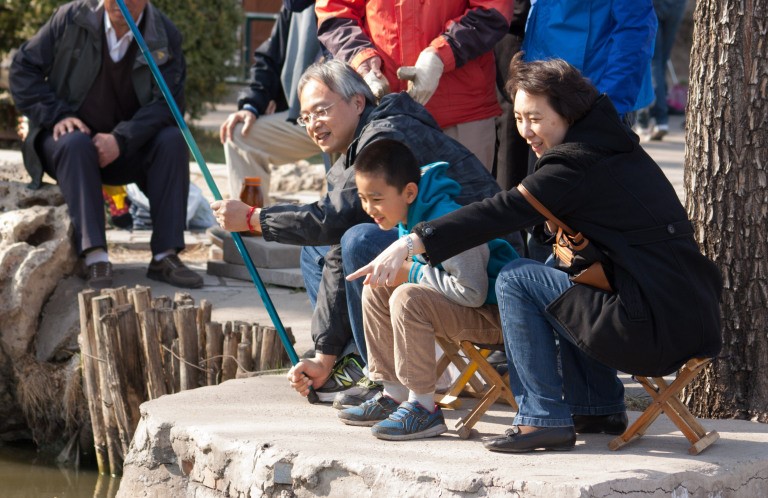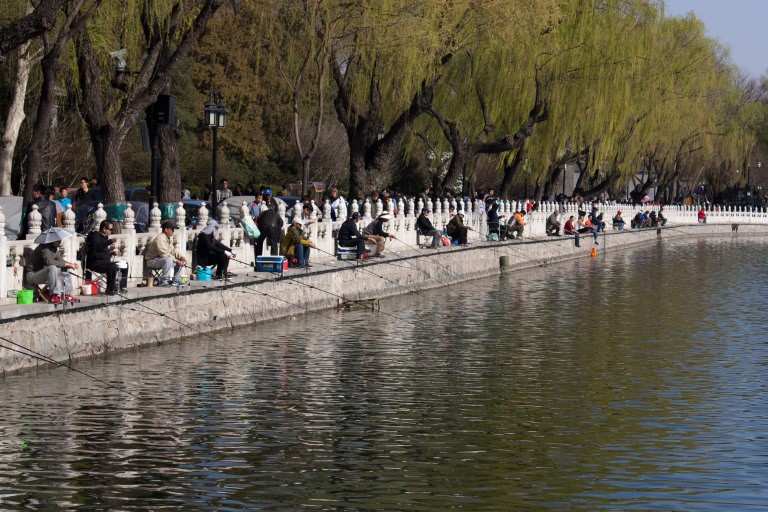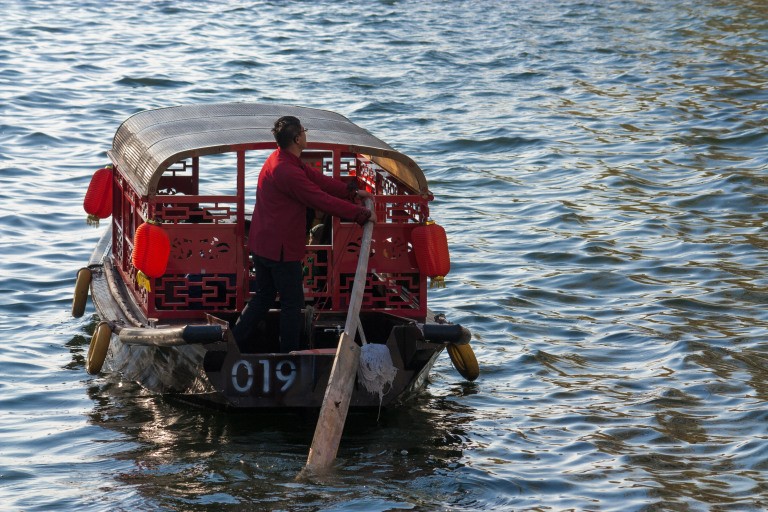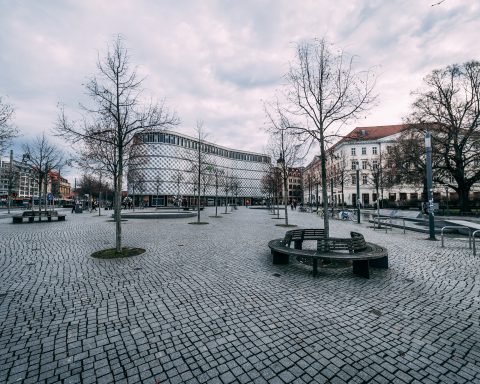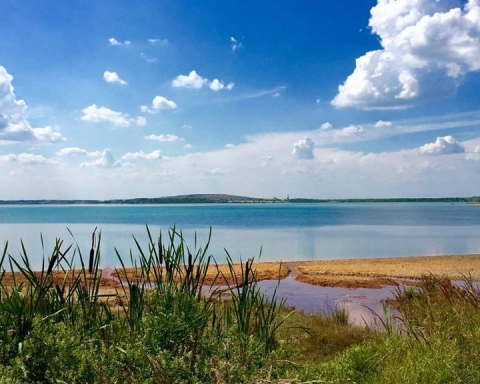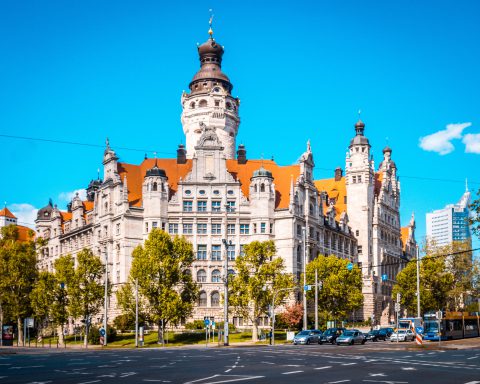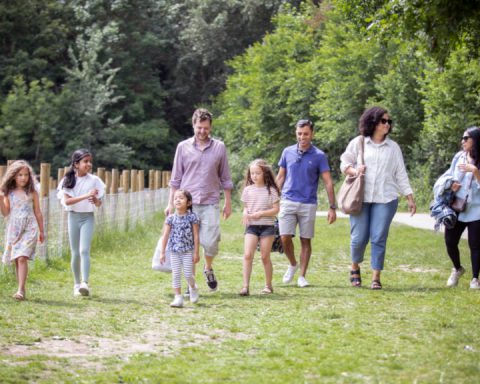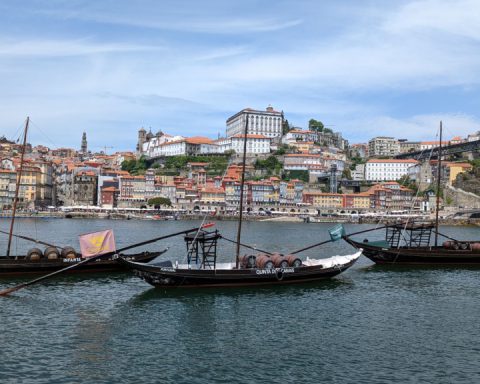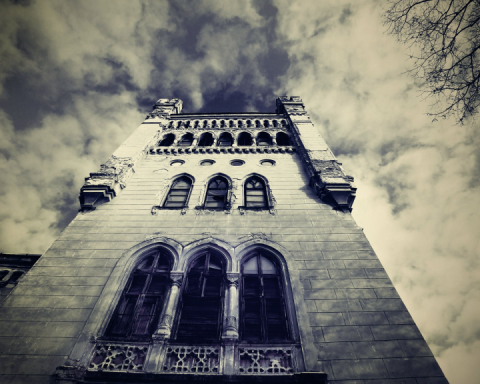China is a nation of people who don’t like cold weather, and aren’t very fond of hot weather either. Considering that a large part of China becomes bitterly cold in winter and brutally hot in the summer, the spring and the autumn really are wonderful parts of the year for the Chinese.
But there’s a problem. In the north of the country, these two favourable seasons are strikingly short. With that in mind, I went out in search of Beijing’s spring.

I just about spotted it.
The first sign were the willow trees. Even before the blossoms started to appear, cascades of young, lightly coloured leaves had begun to drape their way across the green spaces.
Though most of the residents were still reluctant to remove their long coats, the parks flooded with happy faces, relieved to finally say goodbye to winter. After four months of cold and coal fire pollution, there is no better way to celebrate than go outside, breathe and smile.
And what do the Beijingers do with that great opportunity? As far as I could tell, fishing is high up on the priority list.
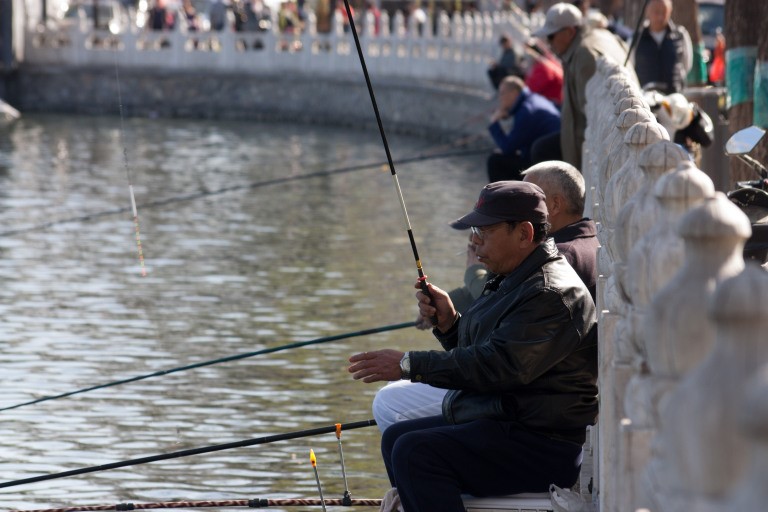
No place had quite as many avid anglers as Qianhai, at the northern point of the line of lakes that wind through Xicheng from the Forbidden City. Along the lake was what can only be described as a barrage of fishing rods and lines reaching out into the water.
Fishing is, of course, not for everyone. For some, the turn in the weather allows space simply for introspection.
Many of my fellow park goers in Beijing seemed quite happy to sit in silence and think, whilst resting under the willow trees and staring over calm waters.
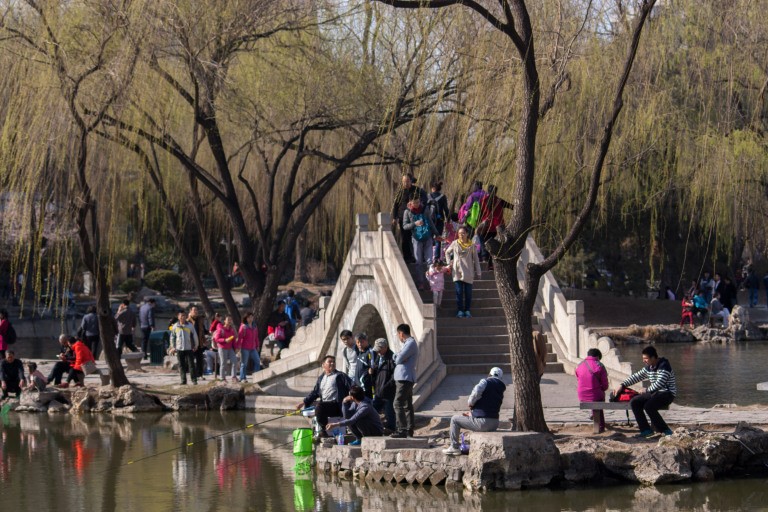
Yet plenty of locals don’t enjoy silent introspection, either, and instead prefer to fill the parks with music. Some people bring their musical instruments outside. Many older residents take turns singing traditional songs and opera with their friends. Even whole choirs gather outside under pagodas resting by the lakeside.
And where there is music, there is dance.
Huge group dances abound in China. The most famous are the so-called “dancing aunties”, who cover squares and parks nightly in every city. But as these almost regimented groups aren’t afraid of the winter, there’s no triumphant return for the dancing aunties in spring; they’ve just kept going.
The spring weather can get others on their feet too, the “dance floor” no longer reserved for the armies of middle-aged women. This man wouldn’t let the aunties have all the fun.

And sometimes, a good old simple walk will suffice. You may apparently end up being followed, however, by balloons. Many of China’s larger parks have a kind of permanent fairground in them, meaning that balloons, bubbles and other fairground fare are common sights, depending on where you go.
In fact, the word “park” in Chinese, 公园, means public garden.
It is indeed open for everyone – and so much so in Beijing that even a strange number of giant rubber ducks have their space too.
For the government, the wonder of public spaces is that the public actually like to go to them, making them the perfect place for political announcements. Last year, along the wall of the fairground area of Zizhuyuan, there were posters explaining the goals of the 十三五, The Party’s 13th Five Year Plan.
The warmer spring weather also heralds the arrival of tourists, and with them, all things touristy.
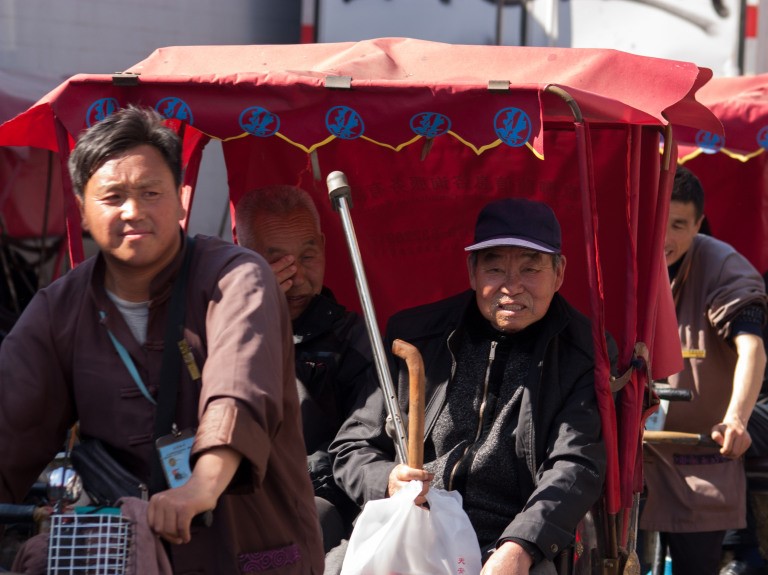
One of the attractions in the centre of the city is a ride on a bike-driven cart around the old town. At the moment, these carts swarm the narrow hutongs (Beijing’s alleyways) in packs.
How about normal bikes? After all, the city was famous for its sea of bikes; so much so that Katie Melua wrote a song about the 9 million bicycles weaving in and out of each other.
Sadly, even the sunny weather can’t bring them back. Cars have slowly been replacing the city’s former 2-wheeled, non- greenhouse-gas-emitting symbol.
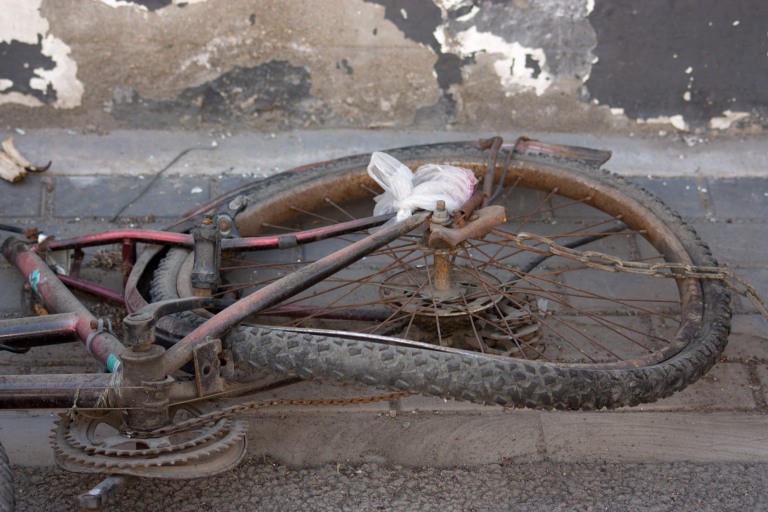
Bikes are, however, still here to an extent, and there are even some moves towards boosting their popularity once more. For now, many bikes remain dust covered or even broken and rusted on street corners.
One Beijing tradition that’s revived after cold season is the gathering of many bird cages across the city’s public spaces. Many of the older locals keep birds as pets, and in the summer they join their owners in the park. Sadly, they remain in the cages.
As you can imagine for an animal that has been locked in a tiny space most of its life, most have gone slightly mad. They hop around in circles continuously, that little hop being the only movement they have space for to make.
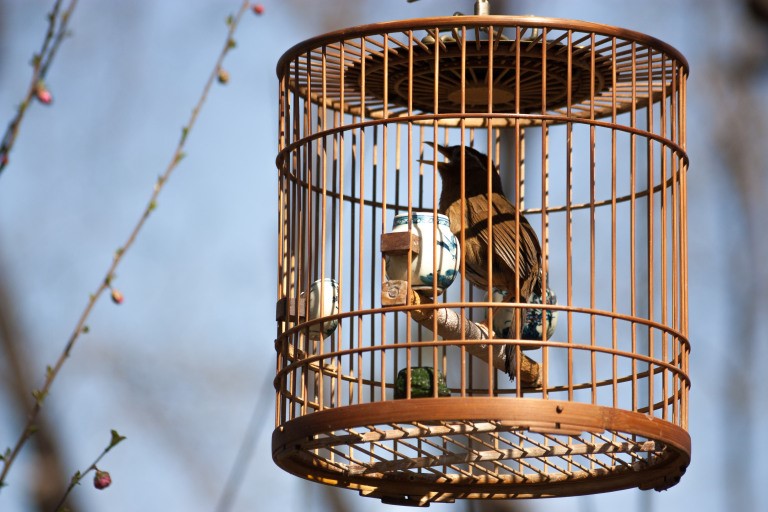
Less harmful hobbies also get revived as the world bursts into spring. Like friends gathering together to play cards or Chinese chess. Occasionally you might also see Mah Jong, but it is less common, perhaps because no one wants to be accused of gambling.
And of course, there is one thing that instantly jumps to mind when spring and China are discussed together – cherry blossom. Although perhaps much more dramatic in the south and over the sea in Japan, the perfect white flowers do bloom for a few days. The city hardly becomes a sea of blossom, but they are still a sign: the long winter is over.
Originally published in April 2016 on the author’s travel blog, TVG in China.
Written by Timothy Van Gardingen

